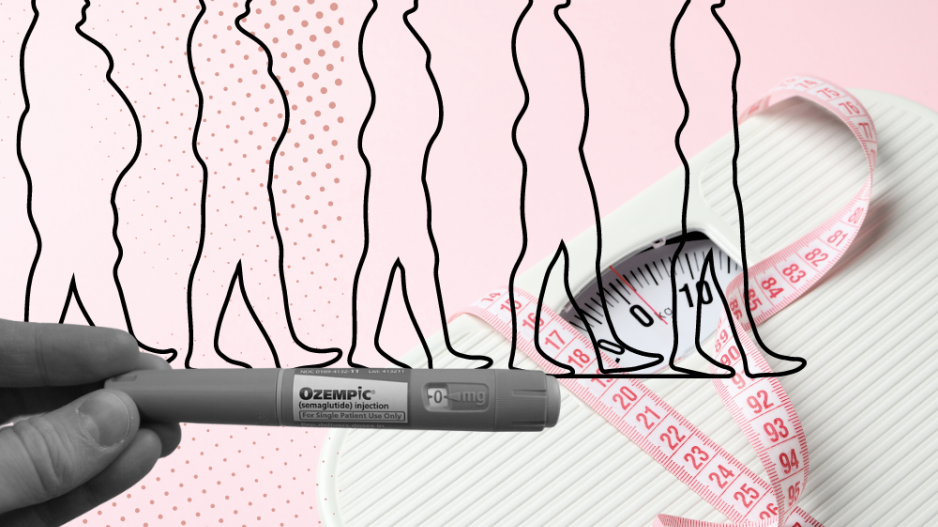Cyprus and the Global Weightloss Phenomenon
The “idealized” female body has been reimagined and reiterated across centuries. For example, the “Venus of Willendorf” figurines found in Austria in 1908 display round-shaped women’s bodies symbolizing fertility. Or, Charles Dana Gibson’s portrayal of tall, voluptuous women in the 1890’s where a new ‘standard’ was set for the ideal feminine body, earning the title of the “Gibson Girl”. To achieve this physique, women would often have to wear a corset to display a slim waist and voluptuous curves.
The male body has also seen various iterations throughout history, starting with the ancient Greeks and their ideals of what constituted to be beautiful. Recently, narratives push the idea that men should be muscular like the statues found throughout Greek history. On the contrary, in the 19th Century, referred to as the Gilded Age, men prided themselves in having a big belly as it signified an abundance of wealth and the lack of a need to do labor-intensive work.
Today, social media and celebrities have heavily influenced the way society idealizes the body. A study conducted by York University in Toronto suggests that “more recently a curvier or more full body type, characterized by a small waist and flat stomach but large butt, breasts, and thighs has become popularized in White-centered mainstream media by well-known celebrities and beauty influencers such as Kim Kardashian, Kylie Jenner, and Beyonce.”
It found that the more emphasis people place on achieving such a physique, the more they experience physical dissatisfaction with their own bodies. Dissatisfaction with physique is common among overweight individuals, and it seems like achieving an ‘ideal’ physique is out of reach.

Enter semaglutide and its injectable variant, Ozempic. A registered trademark of Novo Nordisk approved in 2017, the supreme slimming shot has made its name for helping users lose weight incredibly quickly around the world. It helps people with type 2 diabetes (T2D) lower their blood sugar which is observed in an A1c test by stimulating insulin production. It is so popular, in fact, that according to GlobalData it generated $8 billion in revenue in 2022, and is expected to increase in sales this year to yield just over $12 billion in revenue.
Over 373,000 prescriptions for Ozempic were filled in February of 2023 alone, and various celebrities endorsing it such as Elon Musk and Chelsea Handler, Ozempic quickly rose to prominence, and has even reached Cyprus.
Made to combat excessive obesity and T2D, the drug has found great success in fulfilling its intended use. In this context, it has also become widely used across Cyprus, as well. According to the International Diabetes Federation, just under 10% of adults in Cyprus are affected by diabetes. Additionally, 23% of adult women and 24% of adult men live with obesity across the island.
These figures clearly lay out the need for the slenderness drug in Cyprus, and explains why there are shortages of it, not only in the island, but also globally. There are suspicions, however, that suggest that some are using Ozempic for vanity, rather than for health reasons, which perpetuates the stigma of the “ideal” body in both men and women, and reduces the availability of the medication for people who need it.
A study conducted by Tebra in the United States highlights this suspicion, indicating that “42% of medical practitioners have had patients without diabetes ask for Ozempic, and 18% have prescribed it for weight loss.” The study adds that, “15% of Americans have personally used Ozempic for weight loss, while 47% know someone who has.” It highlights that “unfortunately, Ozempic’s sudden popularity may have left over half of Americans with diabetes struggling to get their medication.”
The significant danger in these findings is that people are willing to risk bearing the side effects that come with the medication, as well as putting other people in danger for not having access to the medication they need, in the name of vanity. Using Ozempic to overcome obesity and diabetes is its intended use. Using it for the sake of looking better in the mirror is something that doctors and pharmaceutical professionals are seeking to monitor and prevent.
Side effects include increased signs of aging, lipodystrophy (affects how the body accumulates and stores fat), nausea, vomiting, and more unpleasantries. As Ozempic is a long-term medication, it requires sustained intake over an extensive period of time. According to a study conducted in May 2022, if someone were to stop taking Ozempic, they may regain their lost weight, spikes in blood sugar, and experience cravings. For these risk factors, it is paramount that doctors and pharmacists remain vigilant and true to their practices.
Speaking with the Director of Pharmaceutical Services, Dr. Elena Panagiotopoulou on the matter of Ozempic in Cyprus, she stated that, “we have informed doctors and pharmacies to be extremely cautious of who they prescribe Ozempic to, to follow the EMA guidelines, and to ensure that it is used only for those who need it. If it is known that someone is using it for reasons outside of what is outlined by the EMA, it should be reported to the appropriate authorities.”
On the matter of its side effects, Dr. Panagiotopoulou highlighted that “it especially targets the kidneys. There are no drugs that come without side effects to be wary of. That is why it is critical to ensure that the distribution of Ozempic is appropriately monitored.”
Ozempic has proven to be a great medication for people who are dealing with obesity and type 2 diabetes. However, there are findings that indicate that the medication is being taken for vanity reasons, and there is a possibility that people have been encouraged to do so through insecurities about their bodies due to excessive consumption of ideals pushed through social media.
The human body has been idealized for various purposes and under different guises of beauty throughout history, and there have been ways of achieving those physiques either with the use of corsets, exercise, and the case of The Gilded Age where that physique is attained through ample and careless consumption of food. Today, the concern is if technological and pharmaceutical advancements are being misused to “shape” the body to be slimmer, regardless of the health risks included. As Dr. Panagiotopoulou stated, it is critical that the distribution of the medication is thoroughly monitored and strictly adhered to.






